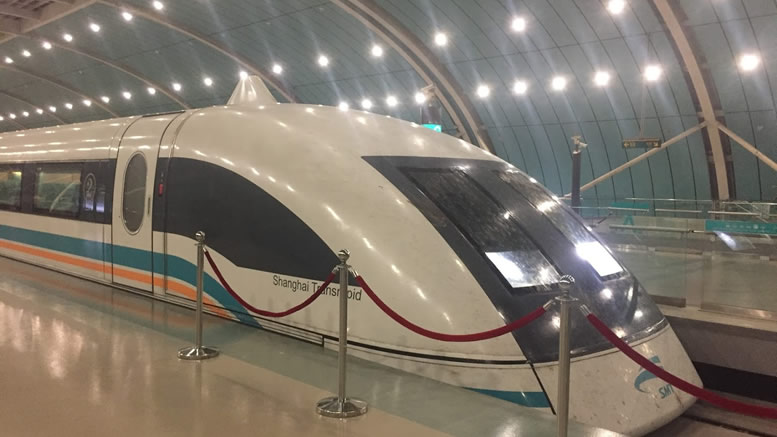 The Transrapid is the first fundamental innovation in the field of railroad technology since the invention of the railway, because the new transportation system overcomes the technical and economic restrictions of the wheel-on-rail technology. The superspeed maglev train is a non-contact system and has neither wheels nor axles, gearing or current collectors which are all subject to wear. Wearing mechanical installations are replaced by highly reliable electronics.
The Transrapid is the first fundamental innovation in the field of railroad technology since the invention of the railway, because the new transportation system overcomes the technical and economic restrictions of the wheel-on-rail technology. The superspeed maglev train is a non-contact system and has neither wheels nor axles, gearing or current collectors which are all subject to wear. Wearing mechanical installations are replaced by highly reliable electronics.
The functions of wheels and rails, support and guidance, propulsion and braking are replaced by a non-contact magnetic elevation and propulsion system. The system is based on attractive forces acting between the electromagnets arranged on both sides of the vehicle and the stator packs installed below the guideway.
The levitation magnets attract the vehicle to the guideway from underneath while the guidance magnets keep it on track. An electronic regulating system ensures that the vehicle hovers over the guideway at a constant distance of ten millimetres.
Conventional means of transport carry their motor on the vehicle, although the full engine output is not needed most of the time.
In contrast, the propulsion system of the superspeed maglev system is installed in the guideway in the form of a linear motor. This “guideway motor” has two big advantages: firstly, the vehicle is much lighter, and secondly, the driving power is flexible. This means that in up-grade or acceleration sections more power is installed in the guideway than in sections where the route runs at grade.
The linear motor in the guideway functions just like a conventional electric motor with its stator cut open and stretched out over the length of the guideway. Instead of a magnetic rotary field, the current in the windings generates a magnetic field of travelling waves, which pulls the vehicle without contact. By changing the intensity and frequency of the driving current, speed and thrust can be continuously adjusted. When the motor is operated as a generator, the direction of the energy flow is reverted and used for contactless braking.
Additionally, a lot of energy is saved because only that section of the linear motor on which the vehicle moves is powered. Moreover, this prevents two vehicles from being in the same section at the same time and absolutely leaves no chance of trains meeting on the same track.
The double-track guideway consists of beams made of concrete or steel and is installed at grade or elevated, so the guideway can be adapted to any terrain.
the world’s first commercial Transrapid superspeed maglev train started for its maiden trip in Shanghai on New Years Eve 2002 it reached the normal operating speed of 430 km/h to carry passengers 30 kilometres from the city to the airport in just 8 minutes while a bus would need 45 minutes to travel the same route.
Transrapid claim the cost the cost of infrastructure to set set up a maglev system is comparable with a traditional rail system, many more maglev systems are about to be decided upon, not only in China but also in the US and the Netherlands.
